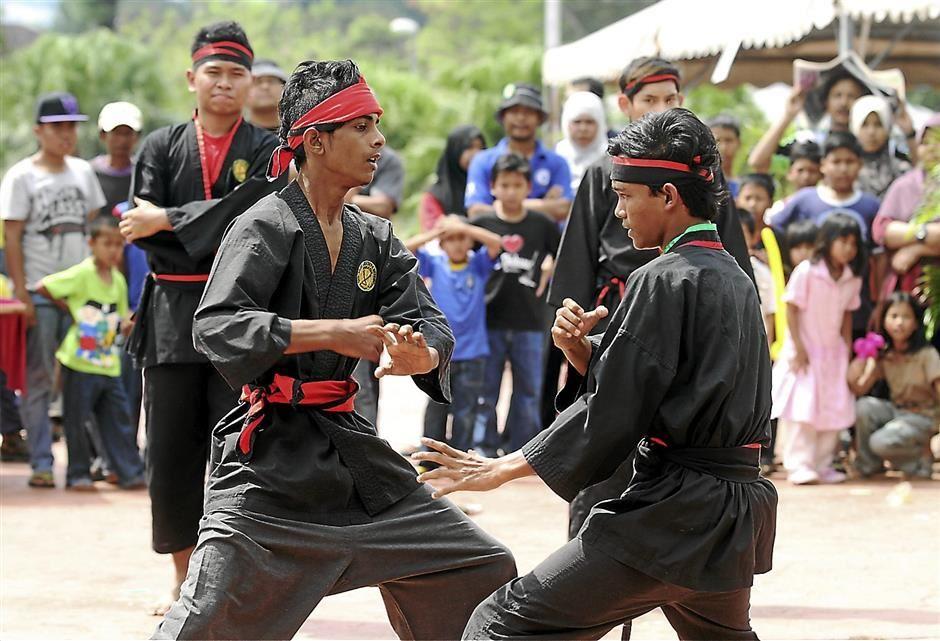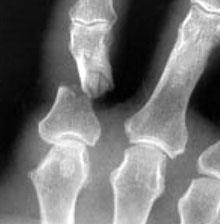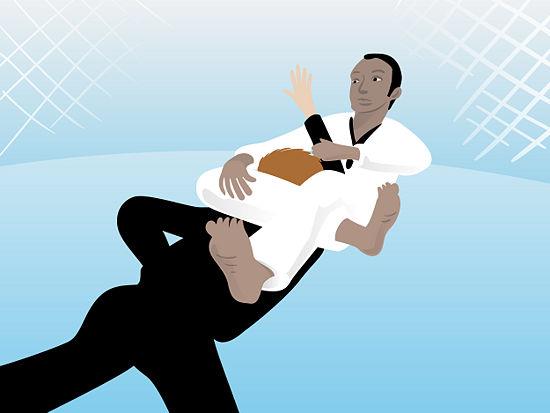Martial arts varies and can be risky. However over the centuries, rules and regulations have been developed to keep participants safe and injury free.
Different martial arts require different uniforms. Your fencing mask, groin cup and taekwondo pad protects your body from harm.


There are many different styles practiced around the world, with the most popular forms being karate, silat, taekwondo and judo.
While the martial arts are relatively safe, injuries can happen because there is physical contact between opponents.
Some of the factors that can increase your risk of injury:
- Choice of martial arts
- karate and kickboxing accounts for half of all injuries.
- Poor technique
- moving the body in an incorrectly posture and movement predispose to higher risk of injury.
- Using excessive force
- falling to pull a punch or kick can cause injury to opponents.


Punching image from www.expertboxing.com
- Less experience
- Those who are beginners are likely to sustain injuries as their body not used to the impact yet.
- Overtraining
- too much of training can lead to overuse injuries.
Common injuries during martial arts:
- Abrasions and bruises
- This is by far the commonest injury. It often results from falls onto mats, kicks and punches that are ‘off target’ or when proper pad is not worn.
- Sprains and strains
- Ankle, knee, elbow and wrist are most common to be sprained. Ankle and knee sprain occur due to falling awkwardly on the mat. While elbow and wrist sprain are due to falling, punching or blocking.
- Muscle strains mostly happen in front (quadriceps) or at the back (hamstrings) of the thigh. It is often due to over stretching of the muscle due to missed kicking or kicking too high.
- Fingers and toes injury
- This is often due to kicking and punching of padded targets. It may also happen when sparring with partners.


Finger fracture image from orthoinfo.aaos.org
- Head injuries
- Concussions can happen in martial arts if they fall on their head or being kicked or punched on the head.
- A concussion is any injury to the brain that disrupts normal brain function on a temporary or permanent basis.
- Common symptoms of concussions are headache, dizziness, nausea, vomiting, difficulties concentrating and memory problems. Martial arts that emphasizes on striking and throwing are more likely to result in concussions.
- Facial injuries such as bruises and cuts are common in this sport. More serious injuries such as fracture of the nose, face or skull as well as teeth or eye can also occur.
- Neck injuries
- Minor injuries such as bruising and abrasions are most common. However there are some forms of martial arts that allow choking technique, which can result in loss of consciousness.


Choking technique image from www.wikihow.com
- Minor injuries such as bruising and abrasions are most common. However there are some forms of martial arts that allow choking technique, which can result in loss of consciousness.
General safety tips:
- Warm up, stretching and cool down
- Warm up properly beforehand and stretching of limbs that will be used mostly during sport such as punching and kicking.
- Allow time to cool down and do stretching during this time. It will help your body to optimally recover.
- Prepare yourself well
- Before enrolling in any kind of martial arts, do observe first the movement and techniques used in the sport, knowing the rules implied during tournament. It gives you a better view and opinion on the sport itself.
- Seek advice from the experts on how to improve your skills.
- Wear protective gears such as helmets or mouth guard to reduce the chance of injury.
- Please obey all the rules of martial arts.
- Use your peripheral vision. If you have a good hand-to-eye coordination, you are less likely to get hit.
- Try to put emphasis on fun rather than competition, This will make you enjoy the sport more.
References
1. Thompson WR, Vinueza C. Physiologic profile of Tae kwon Do black belts. Sports Medicine and Training Rehabilitation. 199:3:4953.
2. Clinical Sports Medicine, Peter Brukner and Karim Khan.
| Last Reviewed | : | 23 Jan 2014 |
| Writer | : | Lt. Kol. Dr. Ridzuan b. Azmi |
| Accreditor | : | Prof. Madya Dr. Ahmad Tajuddin b. Othman |







